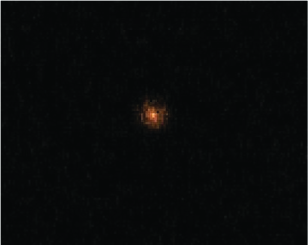Mikkel's List
Quick Search
Single Atom
Did your school teacher ever tell you it was impossible to actually "see" a single atom? His or her argument may have been that because the size of the atom is much smaller than the wavelength of visible light, it is impossible to see. However, here at the University of Otago we have done just that! The trick is to isolate one atom away from any others.
The key element in the experimental setup is a single element, high numerical aperture (NA) ashperic lens placed inside the vacuum chamber in which the experiments take place. The use of the lens is twofold. First, by directing off-resonant light through the lens, we form a microscopic dipole trap such that one or more atoms can be trapped at the focal point of the lens. Second, we can fluorescence image a trapped atom by exposing it to a beam of quasi-resonant light. Given that the atom is held by the dipole trap at approximately the focal point of the lens, a large portion of the scattered quasi-resonant light can be collected by the lens and directed onto an imaging device.
To trap between one and several atoms, we first create a high density compressed Magneto-Optical Trap (MOT) of Rubidium (Rb85) inside the vacuum chamber. By overlapping the cloud of laser cooled atoms with the focal point of the high NA lens, we load approximately 50 atoms into the microscopic dipole trap. To reduce the number of atoms held in the dipole trap, we drive light-assisted collisions by applying another beam of quasi-resonant light. By carefully tuning experimental parameters, we can make a collision between a pair of atoms lead with high probability to the loss of a single atom from the dipole trap. This process is repeated until only one atom remains in the dipole trap. The main idea is to excite the atom pair to a repulsive atom-atom potential using light that is blue detuned from resonance, thereby limiting the energy gained by the atom pair to the detuning. At present, we can produce a single atom with a probability greater than 90%.
Below: An image taken in our experiment of a single trapped Rubidium-85 atom.


